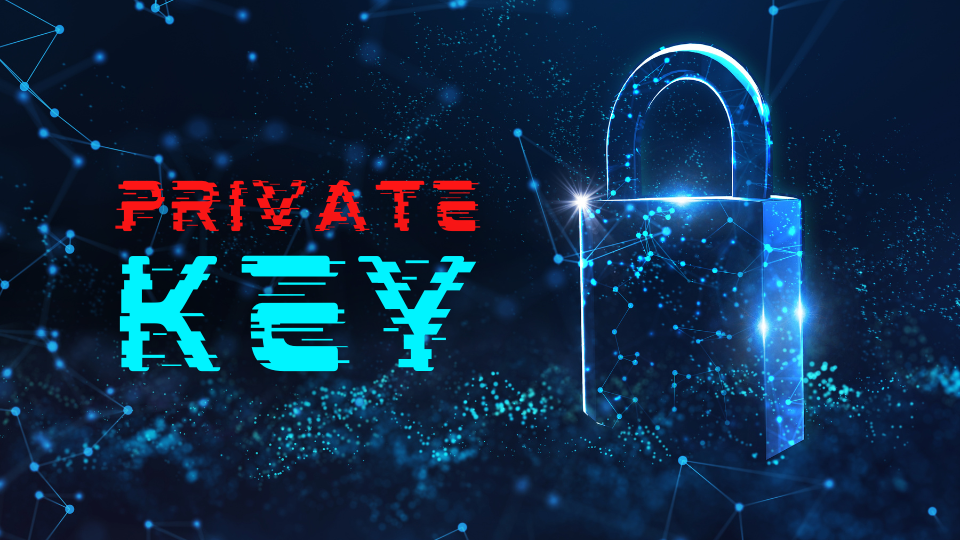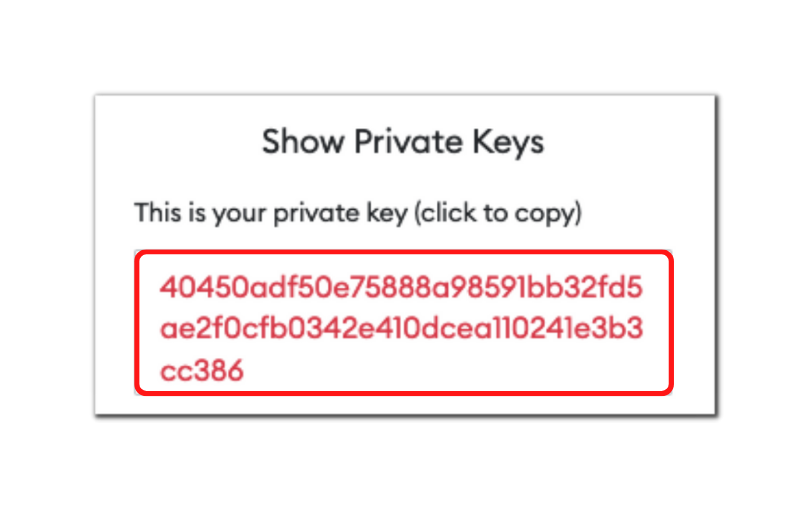What is a Private Key on The Blockchain?
A private key is a quintessential part of blockchain technology in cryptocurrencies. It serves as an authentication device to validate the ownership of your assets on the blockchain. But what exactly means by the term “Private Key”, why is it important, what purpose does it serve, and where to find it? Let me answer all these questions in this article.
Imagine there is a system that requires you to enter a password for locking and unlocking it. And you have two passwords. The catch is; if you lock it with password 1, it can only be unlocked with password 2, and vice versa. And because only the second password can open the system locked with password 1, if you are able to unlock the system locked with the second password, it proves that you must have the second password without needing to show your password to anyone.
Blockchain functions similarly. Consider password 1 from the above example as your public key, you can generate as many of these as you want, and you can share it with anyone without worrying about anything. Anyone can send you funds using your address generated from the public key.
But in order to access those funds, you must have the Password 2 or Private key in the blockchain. Only the person possessing the private key can access the funds of that account. Hence, only the owner gets to access the account. And in case you lose your private key, you lose access to your funds.
Nature of the private key:
A private key is the single most important thing you need to protect when dealing with blockchain and cryptocurrencies.
The private key is essentially a very long, randomly generated number encoded to an alpha-numeric string for simplicity. A private key is unique for a given account. You can generate as many public keys from a private key as you want.

Generally, you won’t need to see the private key of your account. Many cryptocurrency wallets provide you with a seed phrase that stores all of your private keys and allows you to do transactions on the blockchain. The seed phrase is an interesting topic in itself. You can learn more about those from here.
Functions:
The primary function of a private key is to authenticate your identity on the blockchain and generate public keys for you to be able to receive funds.
It is the only thing responsible for that purpose. Hence, you should protect it at any cost. Losing your private key means losing access to your account. And there is no possible way to recover if you lost it somehow. Hence you must securely store it in a safe place. You may find this article(hyperlink) helpful to understand the best possible ways to store your private key.
And because it is so essential to accessing your wallet, it is a good target for malicious attacks. In fact, almost all the hacks you hear about in the crypto space work on accessing the Private key of an account. Hence, gaining total control over the assets associated with that account.
Where to find it:
There are two types of wallets you can have to store your private keys. A custodial wallet and a non-custodial wallet. You’ll find the meaning and differences between these in this article. But, for now, if you use MetaMask, you’ll find an account details option in the three dots near your wallet address. Enter the export private key option from there, and you’ll be greeted with your private key after entering the MetaMask password.
- Latest Articles
- How to Send Crypto on Metamask?
- How to Send Crypto on Trust Wallet?
- How to Add Optimism Network to Metamask
- How to Add the Polygon Network to Metamask?
- Where to Find the Private Key in Metamask?
- How to See BSC Address in Trust Wallet?
- How to Find a Recovery Phrase in the Trust Wallet?
- Is My MetaMask Address Same for Different Networks?
- How to Change Accounts in MetaMask?
- How to Change Networks in MetaMask?
- Where is the USDT Address in MetaMask?
- How to Delete Tokens in MetaMask?
- How to Add the Fantom Network in MetaMask?
- How to Add Custom Token in Trust Wallet?
- MetaMask Alternatives: Top 3 Best Non-Custodial Wallet Extensions
- How to Install and Setup Trust Wallet Extension on Chrome?
- How to Import Account From Trust Wallet to MetaMask in Browser?
- How to Find The Secret Recovery Phrase in MetaMask Extension?
- How to Import an Account in MetaMask with a Private Key?
- How to Add Arbitrum in MetaMask?
- How to Import Custom Tokens in MetaMask?
- How to Import Tokens in Metamask?
- How to See QR Code in MetaMask?
- How to Add BUSD in MetaMask?
- What is Gas Fee on Ethereum?
- How to Install and Setup MetaMask on Android
- How to Change Name in MetaMask?
- How to Get Free ETH in MetaMask?
- Two Ways to Add Avalanche Network / Token in Metamask
- How to Add BNB Network in MetaMask?
- What is a Private Key on The Blockchain?
- What is a Seed Phrase or Secret Recovery Phrase?
- How to Import MetaMask Wallet With Seed Phrase?
- How to Install Metamask on Chrome?
- Forgot MetaMask Password? How to Reset?